For anyone around in the 1980’s, one of the biggest and most sensational news stories of the day was that of Betty Broderick. The news of a double murder by a wealthy, but very disgruntled and unstable, ex-wife of successful attorney Dan Broderick, made headlines across the country. Betty Broderick became a household name, particularly in the Southern California area, as well as within the legal community.
To all who saw her, Betty Broderick was the perfect wife and mother. She married her college sweetheart and then toiled and slaved keeping an ever-burgeoning young family going while helping put Dan through law school. She made sacrifice after sacrifice and as the years passed, she let everyone know it, especially as Dan exploded on the legal scene in San Diego County. But all that sacrifice had paid off. Betty was living a more than comfortable life. But no matter how comfortable Dan’s money made her, Betty wanted what Betty wanted. And one thing that Betty didn’t want was Dan hiring a beautiful young assistant. The harder Betty pushed Dan, the more Dan pulled away, until she finally pushed him straight into the arms of Linda Kolkena. Battling divorce at every turn, Betty became more and more mentally unstable until, consumed with hatred and vitriol, she did the unthinkable; in the middle of the night, on November 5, 1989, she drove to Dan’s house and murdered Dan and Linda in cold blood.
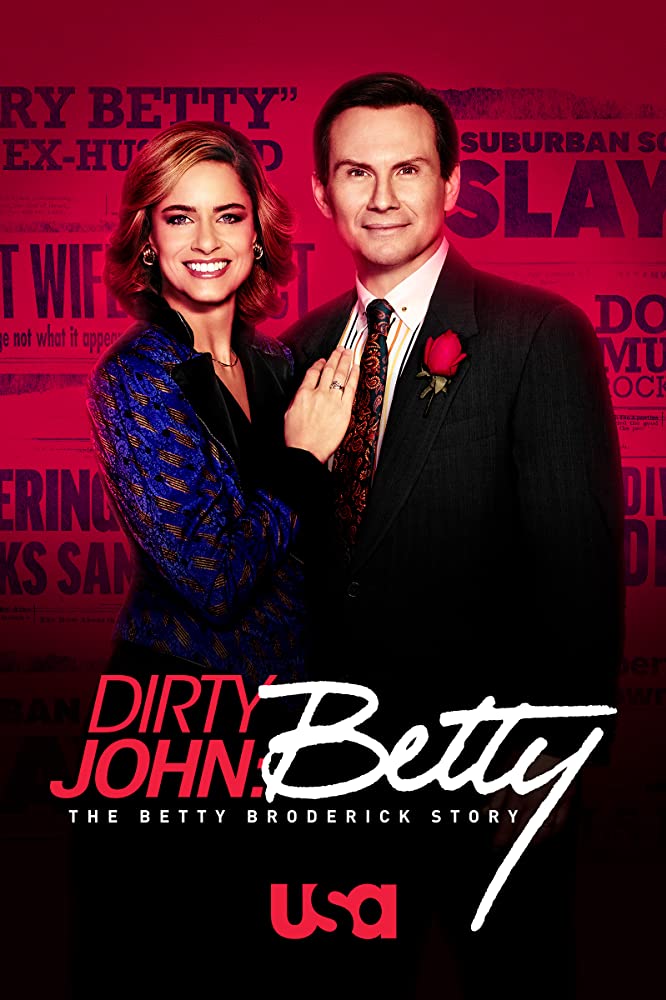
After two sensationalized trials, complete with the requisite accompanying media frenzy, Betty Broderick was convicted and sentenced to 32 years to life. She is now in her 70’s and incarcerated at the California Institution for Women in Chino, California where she is expected to remain for the rest of her days. She has been denied parole due to her failure to show any remorse and admit wrongdoing of her actions. And this is part of what makes Betty Broderick’s so compelling, so fascinating.
In 1992, a two-part telemovie, A Woman Scorned: The Betty Broderick Story and her Final Fury: The Betty Broderick Story starring Meredith Baxter in the title role, scored high in the ratings with viewers. Playing to the sensationalization and the “I was wronged” aspect of Broderick, the story was gripping, but just glanced the surface of the underlying truths.
Now, almost 30 years later, Alexandra Cunningham brings us Season 2 of the Dirty John anthology series, DIRTY JOHN: THE BETTY BRODERICK STORY. Starring Amanda Peet as Betty Broderick and Christian Slater as Dan Broderick, these two make the 1992 tv movie almost forgettable. Digging into the story behind the tabloids, Cunningham and a team of writers and directors deliver a powerhouse 8-episode series that will rock the house. One of those directors is MAGGIE KILEY who helmed four episodes of the show, including the opening and the finale.
An alumna of AFI’s Directing Workshop for Women, and both a Fox and Film Independent Directing Fellow, Maggie has more than proven her mettle as an award-winning director, helming episodes of American Horror Story, Riverdale, Scream Queens, Chilling Adventures of Sabrina and more. She has a gift for storytelling using all the tools in the toolbox, letting performance and script be center stage and camera, lighting, score, production design and costuming buttress and strengthen the core of the production.
Needless to say, given her storytelling eye and abilities, it’s no surprise that Cunningham tapped Maggie as not only a director on Season 2, but as a Co-Executive Producer. As demonstrated in DIRTY JOHN: THE BETTY BRODERICK STORY, Maggie has a gift not only for storytelling, but for playing with perception and reality to delicious, thought-provoking result.
I spoke with MAGGIE KILEY at length in this exclusive no holds barred conversation about DIRTY JOHN: THE BETTY BRODERICK STORY.
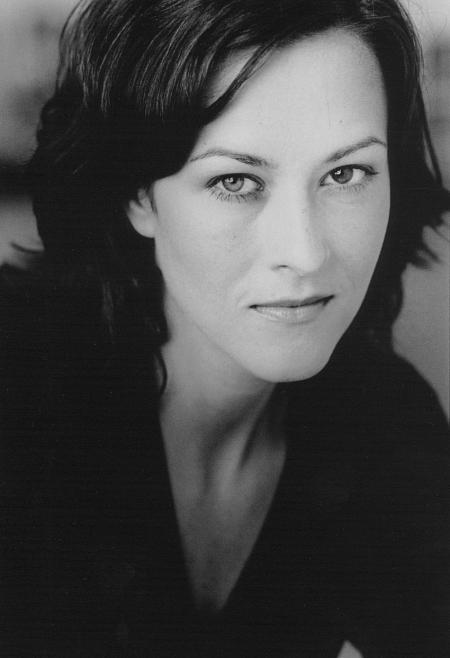
I am obsessed with this series. It is riveting. I loved what Dick Lowry did back in ’92 with Meredith Baxter for both episodes of the mini-series, and I was also well aware of all of the real-life events surrounding the Broderick situation and the trial when it happened as I was in law at the time and was following the case from the legal perspective. But what you and Alexandra [Cunningham] have done here, puts the 1992 series to shame. DIRTY JOHN: THE BETTY BRODERICK STORY is so well done; and your direction of episode eight with perception as reality, those court sequences with the DA examination and the back and forth exchange to impress upon the jury – just trough the roof. Absolutely stunning.
Well, thank you. That’s so great to hear. It’s daunting when you get a script like that, that it’s so important, and you know you’ve arrived at “that” place in the story. But knowing that we were going to be spending, I think 80% of that episode within a courtroom set, is certainly a challenge from a directorial standpoint. So I so, so appreciate that you felt that way.

I know you directed episodes one, four, five, and eight, but you set the tone with episode one and then you bookend it and wrap it all up with episode eight. How do you sit down and approach this? It’s going to be eight episodes. You’ve got the beginning, the end, and then a couple of episodes in the middle. Where does the construction or deconstruction come in in order to develop the visual tonal bandwidth, layer storytelling, the cinematography, and then the elements of production design, costuming, and performance because it has to be consistent through all eight episodes or it’s going to fall apart.
That’s a great question. In my very first conversation with Alex Cunningham, it was clear that she was going to dig deep into a story that hadn’t been excavated in quite this way before. She was really interested in unpacking the why, and she wasn’t afraid to lead with the big-ticket item meanings, knowing early on, right in episode one, knowing that this is a show that ends in a double homicide, and then using that framework going forward to kind of understand as best you can how this woman who seemed to have so much going for her went so far in this other direction. So I think for me, I was excited to tell a story with a female protagonist and a female perspective coming at it from the inside out as opposed to the outside in. Visually, as you pointed to, wanting to have an elevated, sophisticated, nuanced visual style, one that would help us understand perspective and how it felt to be in that place of great joy and promise and new love. And then as things became more and more disconnected, complicated, when trust was broken, when people started wondering, “What was the truth?”, how to kind of visually support that was a big part of my collaboration with my cinematographer Elie Smolkin, figuring out how to make the environment lean into Betty’s experience.
Well, you definitely do that. And you start in episode one, “No Fault”, with that. There’s energy, there’s frenzy, the color is saturated and by framing it with Betty telling an attorney, psychiatrist, talking to the cops after the murders, you really heighten that. We are in the heat of the moment and that’s what sets this off. We really see Betty and her mental instability. There is no doubt about it. She’s got problems. She’s got big problems.
I think it’s interesting that there are so many sequences in episode one in a car because I talk a lot about the difference between sort of watching someone’s relationship or someone’s experience from across the street and kind of passing judgment or drawing an assumption on what they’re going through versus actually sitting in the car with someone and having a deeper understanding of what it’s like for them. I think we always tried to keep that accessible to an audience. While every moment may or may not be glorious and comfortable, there are cringe-worthy, uncomfortable moments and decisions she makes along the way that put us in an uncomfortable position, it was still important for us to be with her in a way so we knew what was happening at every step.
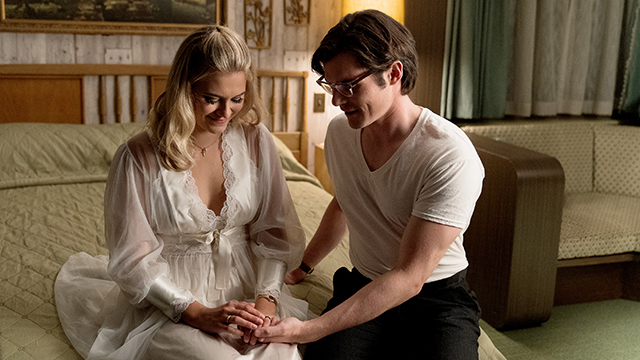
Although you didn’t direct episode two, “The Turtle and the Alligator”, where we flashback to the 1963, the 1965 Betty, I have to say that Tiera Skovloye did just an amazing job as young Betty. And she could be a spitting image for a young Amanda Peet.
She’s wonderful. She’s a wonderful actress. I have directed Riverdale. I hadn’t worked with her in Riverdale but I was aware of her and was so thrilled when she came on board to play young Betty.
We really get to see, and this is kudos to Alex on structuring this eight-episode arc, but this is the first time we really explore young Betty and her mental state, where it all begins in her mind.
I rewatched episodes one and two last night because we premiered and I was reminded how it felt so different even on set to be around young Betty and young Dan. I love that you are sort of dropped into the middle of the story in episode one, but then in two and three you really get to go back to the beginning and see that true connection. And I think that that’s so helpful. Instead of focusing on how everything went wrong, we’re looking at how it was really right. I mean, not perfectly right obviously, but seeing their chemistry, their joyful, playful, early time together was really wonderful to see on the screen.
Of course, you pick this up in episode four with more to it than fun. That montages that show up in here are fabulous. A favorite is the terrific montage of Dan and secretary Linda making goo-goo eyes at each other in the office. And having spent 27 years in law offices, I can tell you that that really goes on, especially in that era. You nailed that. But it’s the detail, like Linda teaching herself how to type – the quick fox jumped over the lazy dog – was hilarious. And you even found the old IBM Selectric for the scenes. Kudos to your production designer and set decorator for that.
We have a wonderful prop department. I loved working on that sequence with Rachel Keller. I’ve always been a huge fan of her. She’s an incredible actor. She brought a very detailed understanding to playing this role. It was a hard one to sort of step into. I think it’s just kind of knowing what the story was going into it, but it was really interesting to see the genuine chemistry between Dan and Linda, Christian and Rachel, and spend a little time in their world after having spent so much time in Betty’s tortured world. It felt very different. And it was interesting to frame those sequences and really be allowed some space to show that there wasn’t this malicious, manipulative pursuing of her; that it really came about in a different way at least that’s how we chose to portray it.
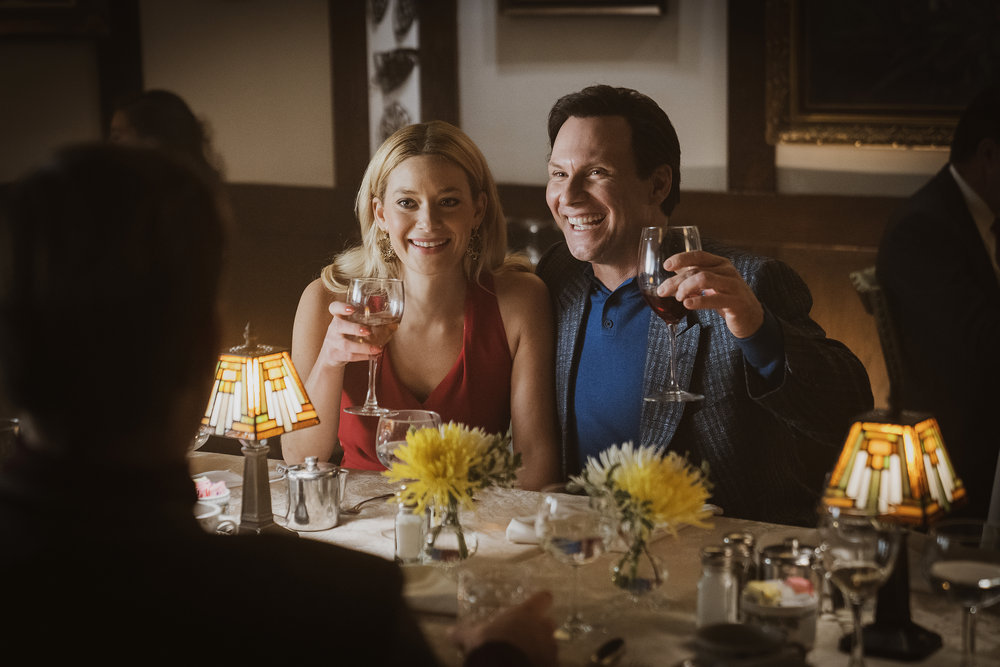
It actually feels much more authentic the way that you have portrayed it. And then episode four is such a pivotal episode, Maggie, because it really takes us through the years as you’re intercutting with the psychiatric expert testifying on the stand. I love the editing in there. The pacing that you develop and that intercut back and forth as we go through October of ’83, November of ’83, July of ’84, September of ’84, September ’85, October of ’85, and we see all the stages of Betty and Dan, and you start seeing a real shift in all of the characters there. You see Linda coming across as somewhat of a manipulator, but the whole time we’re seeing what Dan’s doing. And it makes you wonder, is Betty promulgating this with wanting to have a kid again. And, we’re going to the house, a house infested with rats. You really take us into some dark places that make you wonder, who is the victim? Who are the real victims here? Who is doing the victimizing? There’s enough blame to go all the way around in episode four.
I love episode four so much. I really loved it on the page. When that script came to me I was instantly fired up because I thought that using the psychiatric testimony as sort of a thread through that episode helped us understand just how damaging that kind of psychological manipulation can be. It’s really just this very subtle, small choice, to not. . .well admitting is huge, it isn’t subtle, but the fact that you’re denying something in such a simple way and again and again and again. If there is a person who is utterly convinced that what they believe is true and they keep being told again and again, and again, that they’re wrong, this lets us see just how damaging that can be. Jeff Perry, who played that doctor, had so much dialogue and I don’t think he missed a single word ever. It was fascinating to sit with him and shoot him and find different ways to shoot him because such a huge, huge amount of that episode is his testimony. But you’re right, so much is unpacked there. And I think you really start to understand “the why”; the why of how someone can go from this place to this very, very dark place. I think it’s really articulated well in that testimony.
What you and Elie did with the cinematography in that episode is spectacular from a visual storytelling standpoint. You’ve got some really beautiful muted diffused sequences of sun coming through windows with drapes drawn, which creates that cheesecloth effect, that old Greta Garbo cheesecloth effect, but the way that you use the camera, dutching the camera in various perspectives in the courtroom is absolutely incredible.
That’s so wonderful to hear, thank you.

You really get a sense of the unemotionality and objectivity of this expert because he shows no emotion at all. A couple of times he might raise his eyebrows a little bit but for the most part, he is emotionless. So the camera, no matter what angle you’re lensing him at, he’s still emotionless. But it skews the perspective so it makes you wonder. Maybe I see this more than most people would, but it’s subconsciously saying, “Okay. This is only one expert. What’s another one going to say? Who’s going to counter this?” So I really appreciated that so much, the use of dutching.
That’s so great to hear. Elie is tremendously talented. This was the first time I worked with him. We had conversations from the very beginning about how we could use camera both in framing and lighting and certainly color, which you touched on before, and to use the camera to embark on this emotional journey with Betty. And then finding all those ways that we could shift things, not in an overt way, slight dutch angles or slightly moving into a more shallow depth of field. We also had a portrait lens which was a very specific lens with some feathering at the edges that we used in certain moments when Betty was in certain states. We tried to be careful with how much we had it. But we definitely had a tool kit from the camera that would help us underscore those places and story where things felt left of center or a little unsteady or starting to spin to something darker.
Just so brilliantly done, Maggie. It just adds another whole layer to this story. And then we get through what Shannon [Kohli] does directing “The Twelfth of Never” episode, and then “the Shillelagh”, but then we’re back to you with “Perception is Reality” for the finale. That stark contrast that we see with Betty in jail, but then her whole attitude in jail getting fan mail, it begs for that harsh stark lighting that you have within the prison. It works so well because it’s laid bare that she’s already getting a kick out of all this attention.
I know when you look at episodes two and three and then going into eight and just the tonality of the light and the way we view color, we really wanted those early scenes to have a warmth and a softness to them. And as you moved into the mid to late ’80s, having much cooler temperatures and much harsher light. But you’re right. It was really fascinating to learn how many fan letters and just huge numbers of fans she was engaging with and hearing from when she was in the midst of trial and in prison.
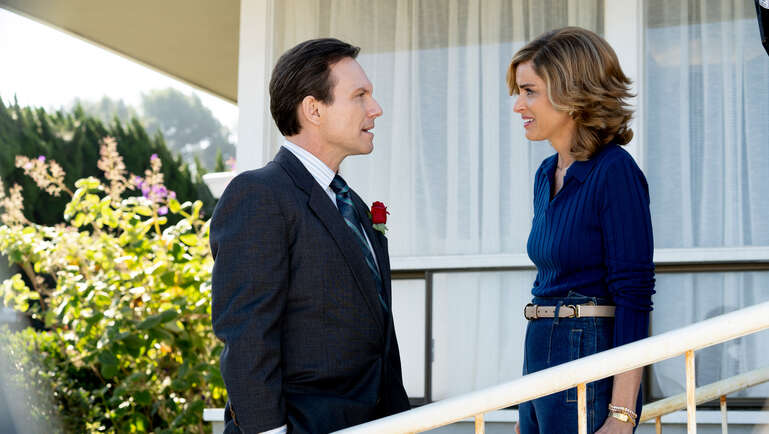
And here again in episode eight, we’ve got the trial and the second trial and it’s amazing what you’re bringing to the table and what you’re capturing. We see her obsessing with interviews for People Magazine and Ladies Home Journal and mocking her own attorney. Then you throw in – which I really, really appreciate as it gives us a whole new perspective – the juror interviews. That adds another layer to this whole story as you’re capturing the jurors after the trial.
When you’re in a courtroom, there are only so many places you can look. So when you’re filming in a courtroom, you’re either shooting the person on the stand, the lawyer, and then the other lawyer, maybe a little bit if you want to get a piece of the stenographer, but we had an incredible group of actors because we were in these scenes for entire days on end, days and days and days. So we had the same people in that jury box and I think everyone was engaged in the room and the action of the room because the performances were so strong and the material is so compelling. So being able to land them in reaction within the room, but then getting these little pieces with them outside with the press added something. I loved that Alex used those because I think it was a really complicated case to make a decision on and I think you don’t always hear about that part of it. I love that we have a little window into what that experience was like. I love those performances too. Those actors who just have to show up and they have one small speech or four lines and they just got out there and they all just nailed it.
The gravitas of the situation and what you capture them saying, especially the one woman who was shell-shocked, “What do you mean? What do you mean she’s going to get that many years?” I have to admit, you made me laugh there Maggie, you made me laugh.
That’s all Alex. That’s her writing.
I was thrilled to see Spencer Garrett sitting as the judge for that trial.
Oh yeah! Gosh, Spencer was a real trooper because those were long days. So wonderful. What a wonderful actor and person.

And I have to say thank you, thank you for working with Patty McCormack. Classic film fans everywhere are going to love seeing her. I adore Patty. She is such a sweetheart.
Wonderful. So wonderful. There are some tremendous guest stars that make their way through this season. I hope everyone will sit up and take notes. Patty, especially, is really fantastic.
Your entire cast here, Amanda [Pett] and Christian [Slater], in particular, are just spellbinding and both award-worthy. I really hope that footage gets submitted for Emmy consideration for both of them. To watch the mental degradation, declination, that Amanda has to go through as Betty, and the way she turns on a dime from that Cheshire Cat happy gloating and happiness at times to just complete screaming rage, is not easy to do.
Not easy. Amanda is a tremendously talented actor, highly intelligent. She brought so much, I mean 10000% to this role. It was not easy. There were days where she had to move up and down the roller coaster 27 times and she never held back. And she was very careful in that she asked a lot of questions and we were all really clear about where we wanted things to live. But I agree. I think both she and Christian did tremendously complex, layered, deeply moving performances.
Did you get to work, especially with episodes one and eight, did you get to work with your editor, with David Bilow at all? Or did David work with Alex as opposed to the episode directors? How much input did you have in the editing of your episodes?
Oh yeah, absolutely. As a director, you’re the first person in the edit with the editor. You’re the first person in with the footage and you craft your director’s cut. Then that cut goes to Alex and then it goes forward. But because I was a producing director on the show I was able to continue my participation in the edit. And I think finding episode one in particular took time. As you can see there’s so many different colors, so you sort of turn up the can, you can go crazy dark, you can lean into really stylized coverage. I think we were all trying to understand where we wanted it to go. But David Bilow, who also I had never worked with before, is such a gifted editor. He’s wonderful with performance. He has great speed. His sense of time and the way he works with music and score is so wonderful. I was just so happy with all of the editing throughout the season. It never fell into a predictable rhythm, which I think can happen so often. I felt like the storytelling, the performances drove the editing rhythm. And that’s what I always look for in my work. It’s never feeling like we’re being boxed into something we’ve seen before.

I’m curious, Maggie. You mentioned the score and I have to bring up the score and the needle drops because whatever Alex paid for licensing for the needle drops was well worth it for the song selections that we have here. Did you know what music you would have at that point when you were shooting or when you were editing? When did the specific songs come into the picture, particularly with the cake montage, because that whole cut matches the music, the songs, so perfectly.
Alex has tremendous music taste. I like to think that I have good taste when it comes to needle drops and score, but I think Alex jumped me on that needle drop. I use a lot of music in my own prep. I create bins of songs that I listen to, so I had shared a lot of stuff early on with my editors and my team just to help us get in the headspace. I wasn’t thinking of a specific song when we shot that sequence but we did use a needle drop in my edit and I think it’s been incredible to watch how the music has evolved. At a certain stage, you’re never sure with what you like, what rights you’re going to be able to achieve from that perspective. But I agree. I think we landed in a pretty awesome place. There are some incredible needle drops in here and I think they aren’t overly saturating the episodes. I think when they’re there, they really hit home. But yeah, it’s been fun to work on the music. And Mark Mothersbaugh as the composer, who I’ve been a fan of forever, it was really incredible early on to sit with Alex and Mark and have conversations about how this season was meant to be distinguished differently from last season. He right away gave us a lot of score that we could start using in the edit right at the beginning and it was really exciting to start to add in that.
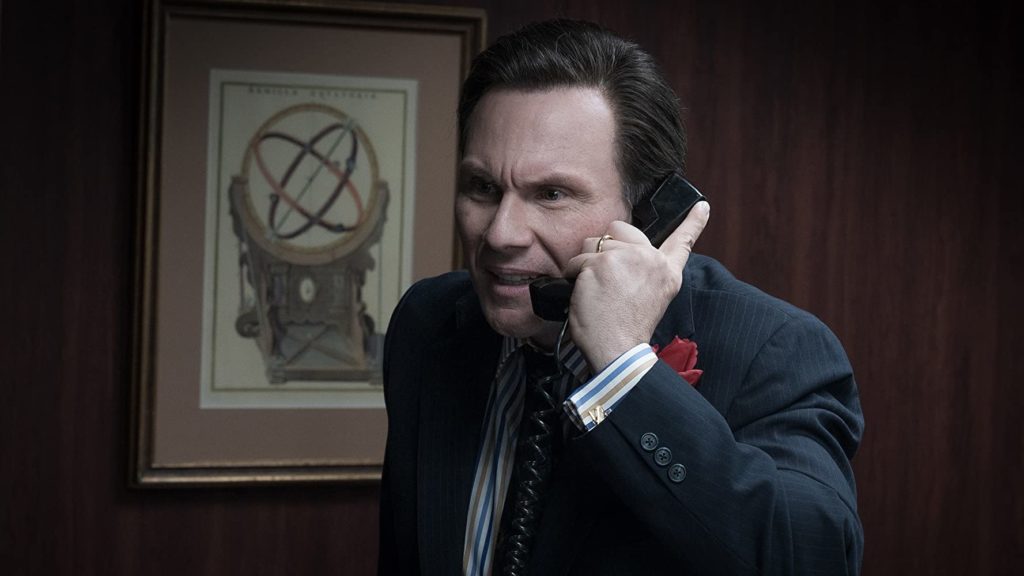
I would be remiss not to mention episode five because episode five “Scream Therapy” is so telling and it involves your young actors, especially a lot with Miles. How difficult is it for you as a director with children involved, because there are some heinous scenes happening? How challenging is that for you as a director when you are directing some of these scenes with profanity, with pulling out guns, showing them to young children saying, remarks being made, “I’m going to kill your dad,” things like that? How do you approach that and handle that with your young actors?
I really like to make sure everyone feels okay with what’s going to happen. I kind of talked through it ahead of time with them. I have a child around that same age so I’m familiar. Both Miles and Cameron are incredibly smart kids who were asked a lot of really strong, clear questions right from the beginning, and I think that they appreciated Amanda and Christian. I have such praise for the cast and crew as everybody was checking in to make sure, “This is going to go to here. Are you ready for that?” I don’t do tons and tons of takes if it’s a high stakes scene. I think if everybody can commit 100% and really be in the room and we get that a few times, that’s enough. I’m not going to put someone in that space again and again and again. Cameron had to do the phone call scene, which is probably one of the most moving experiences I’ve witnessed. It was incredibly powerful to watch this young actor step into that space, deliver a beautiful performance, take adjustments, take his time, and then be done. I think you have to honor the space of an actor, whether it be a young actor or an accomplished actor with years and years of experience and allow the space for them to go there. And if you feel like they’ve really gone there and you feel like you have what you need, better then to move away from it than to kind of needle it and push and push and push and push for something.
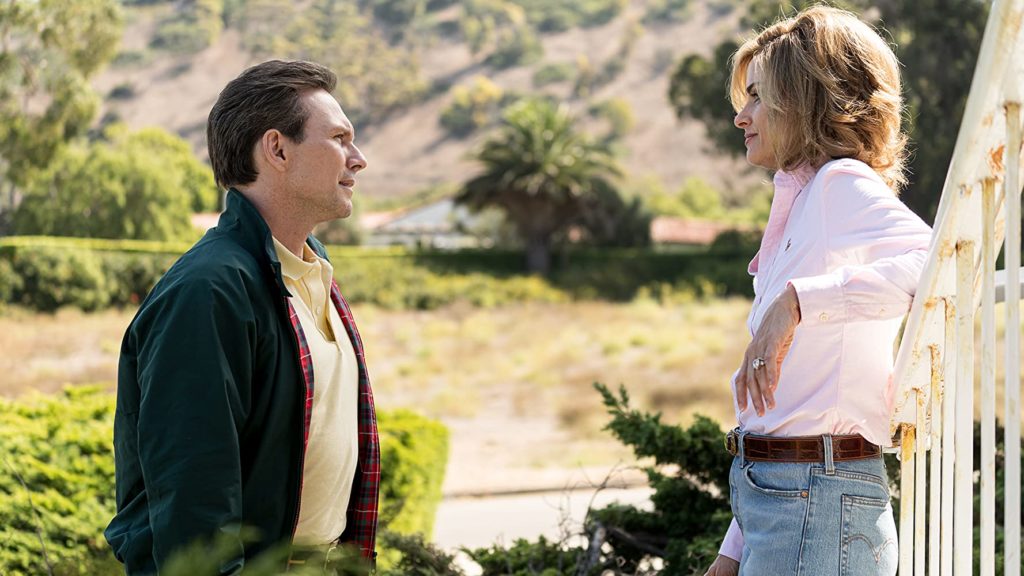
That scene, that phone call scene, was amazing. And the way that it was all from his point of view. Elie had the camera down low so we’re right there in his POV. And then we slowly see his father’s feet in the background blurred in the background because you didn’t play with the focal length and the background. You let it stay blurred. Then slowly the feet moved closer and the camera widens up. That’s just such a beautiful and elegantly shot, but powerfully emotional, sequence. One last question before I let you go Maggie, but I have to ask why. Why now for telling this story again in today’s climate, after the Me Too movement with all of the conversation that has been out there, with all of the Harvey Weinsteins which are more blatant and obvious than what we’re seeing here. What makes this the right time to tell this story in this fashion?
I think something that’s so prevalent in the news right now is diversity and diversity of perspective. And I think that stories about women going crazy and women doing something erratic and completely out of left field has been part of our narrative for a long time. I don’t mean to say that we are looking to excuse the behavior in any way, but I do think digging deeper into it and having a longer conversation about what happened and what then happened to women in partnership, those from a legal perspective and an emotional perspective, I think those are important conversations to be having. I think that Betty was raised in a very specific way. She was leading her life on a path that she was told was the right path. And then things took a very dark turn. I think Alex brought a unique perspective. We had an incredible group of female directors on this season that I think brought each of their own unique perspectives. I think that’s important in everything we’re doing in television and film right now. It’s making sure that we’re hearing from all of our voices, not just the voices that we’ve been listening to up until now.
Very quickly, how are you progressing now that Hollywood is still not back up and working? Do you see the light at the end of the tunnel?
I do. I was on a big meeting with the DGA yesterday where there are many, many conversations happening about how to get back to production safely. I think that there are lots of good ideas in place. I certainly don’t want to get onto set before we’re really ready. I was in production on a pilot in New York when everything shut down, so eventually, it would be great to get back to that pilot. But I’ve used the time to refocus my energy on what are the stories I want to tell and spending time at home with my family. Restudying my focus has been really valuable. So I appreciate that I have the ability to pause in a way and think about what I want to put out into the world next.
by debbie elias, exclusive interview 06/03/2020












